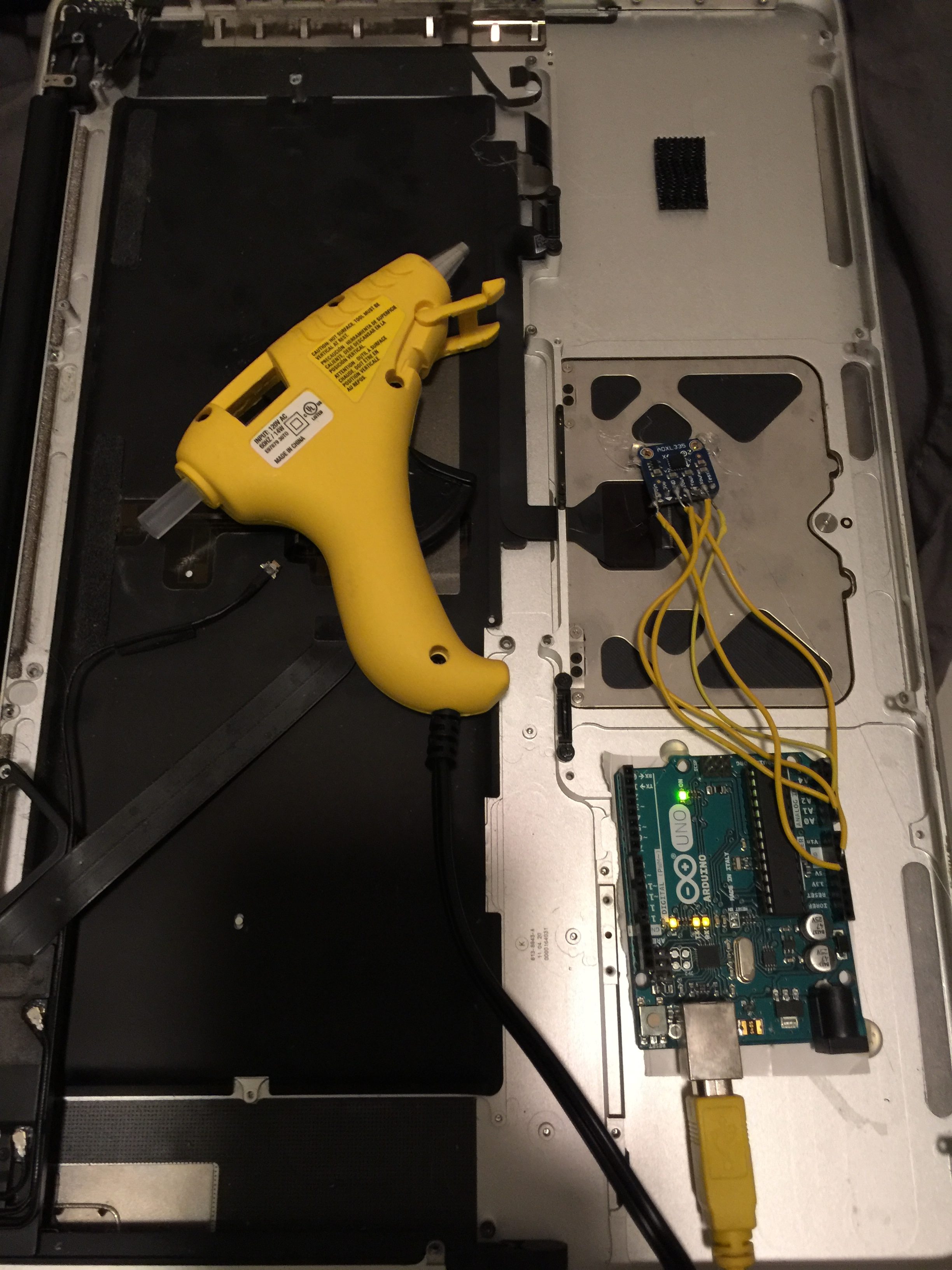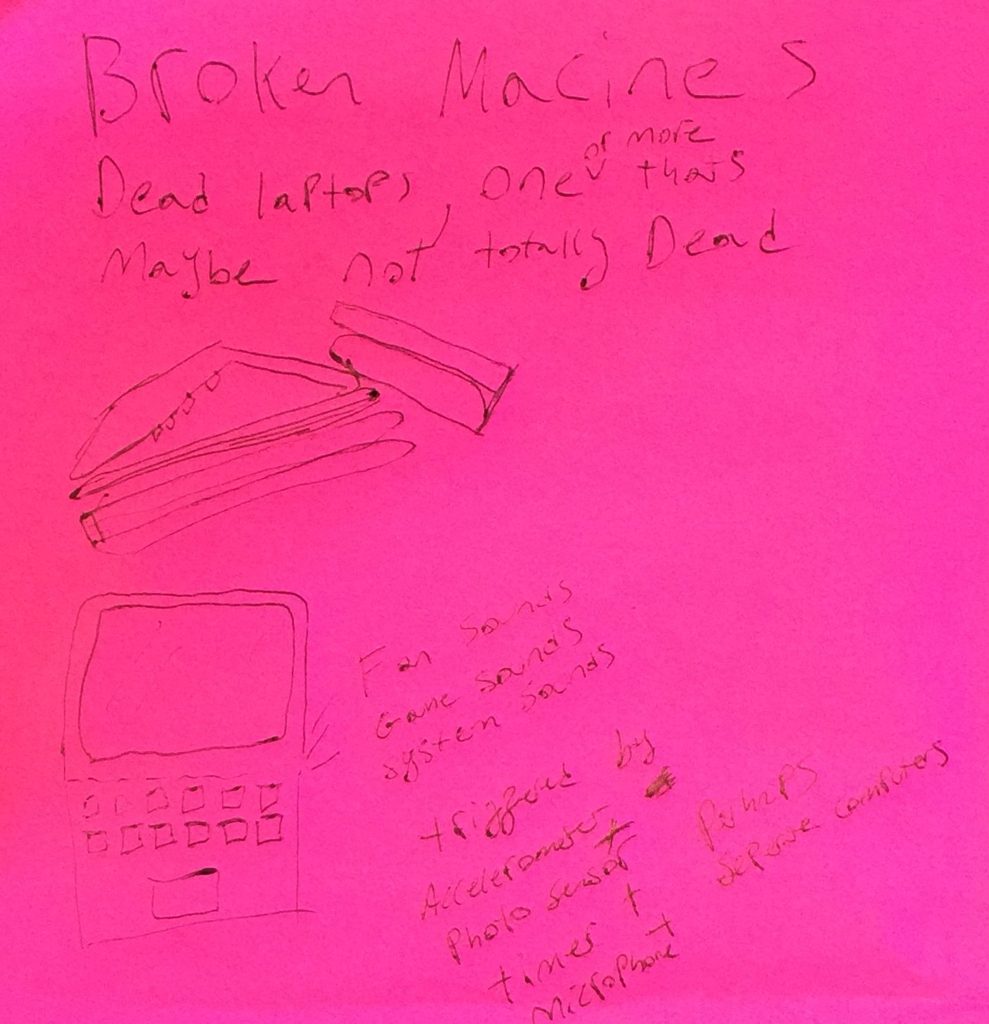Computers do what you tell them to do, except when they can’t.

This week I hacked at my “broken computer” to have it babble out sounds of it’s working life past. The goal was to create a seemly dead laptop that eagerly spits out fragments of media when it senses human interaction. To achieve this I put an accelerometer and Arduino inside of the hollowed out laptop and had the data feed into MAX MSP where it was basically smoothed and used to trigger different sounds from a video game called Railroad Tycoon 3. As the user interacts with the laptop it gets more and more excited to fulfill the role it once had (as a working video game machine). Video coming soon.

I tried for a long time to get bluetooth serial communication working and ran into a series of difficulties. I’m going to try this again when I have time but I think it had to do with a bad Arduino Mega I was using. I also tried to get the audio to come from inside the computer but could not get my computer to pair with the speaker. The combination of these two issues was especially disappointing because having both a wire and external sound make it difficult to realize this project as a junked laptop in a pile of other e-waste; which was the original idea.
Ultimately I think it works as a proof of concept but the feeling of shaking out old memories isn’t really there as much as I would have liked. Especially with the wire sticking out and the external sound, the interaction feels forced and not as serendipitous as I was going for.
Here’s a look at the max patch I was working with:

A large portion of this is from an Arduino serial handshaking example that worked out really nicely for my purposes.
Forgotten hardware from Jesse Horwitz on Vimeo.





